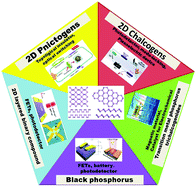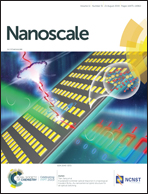Recent progress in black phosphorus and black-phosphorus-analogue materials: properties, synthesis and applications
Abstract
Black phosphorus (BP), a novel two-dimensional (2D) layered semiconductor material, has attracted tremendous attention since 2014 due to its prominent carrier mobility, thickness-dependent direct bandgap and in-plane anisotropic physical properties. BP has been considered as a promising material for many applications, such as in transistors, photonics, optoelectronics, sensors, batteries and catalysis. However, the development of BP was hampered by its instability under ambient conditions, as well as by the lack of methods to synthesize large-area and high quality 2D nanofilms. Recently, some BP-analogue materials such as binary phosphides (MPx), transition metal phosphorus trichalcogenides (MPX3), and 2D group V (pnictogens) and 2D group VI materials have attracted increasing interest for their unique and stable structures, and excellent physical and chemical properties. This article, which focuses on BP and BP-analogue materials, will present their crystal structure, properties, synthesis methods and applications. Also the similarity and difference between BP and BP-analogue materials will be discussed, and the presentation of the future opportunities and challenges of the materials are included at the end.

- This article is part of the themed collections: Editor’s Choice: Controlling anisotropy in nanomaterials and Recent Review Articles


 Please wait while we load your content...
Please wait while we load your content...